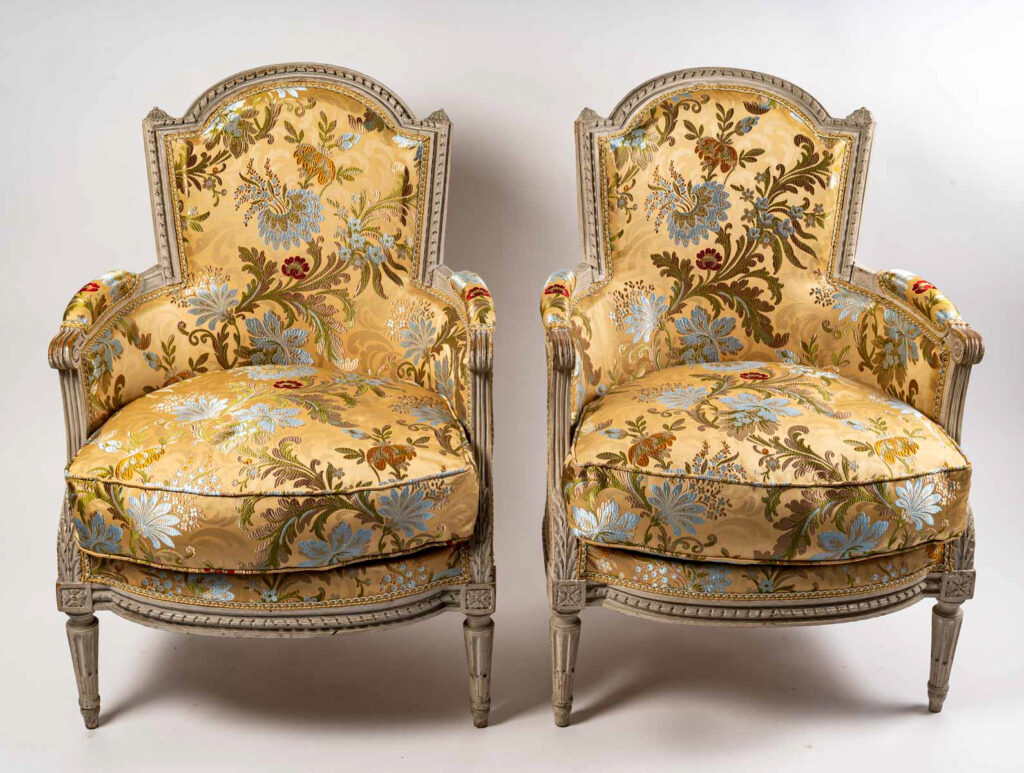Georges Jacob French Louis XVI period Pair of carved and lacquered beechwood Bergères circa 1780
A pair of large Bergères in molded and hand-carved lacquered beechwood, the back in cabriolet, the upper part in handle of basket, the armrests with cuffs finished by scrolls and resting on uprights in fluted console and decorated with acanthus leaves. The connecting piece is decorated with flowers. Feet tapered, fluted and filleted.
French work of the Louis XVI period, circa 1780, the front belts stamped G.Iacob for Georges Jacob. The seats stamped with this prestigious mark are an integral part of the history of French furniture produced in the 18th century.
Dimensions Bergères : Hauteur 95 cm – Largeur 66 cm – Profondeur d’assise 53 cm – Hauteur d’assise 45 cm.
Our seats are in perfect condition, they have just been upholstered with a beautiful Italian fabric (Venice) decorated with flowers.
Georges Jacob (1739-1814) - Master on September 4, 1765: He is the most famous and the most creative of all the cabinetmakers of the 18th century in France. His rich clientele included the royal family.
Georges Jacob was born in 1739 in Cheny in the Burgundy region. Son of Etienne Jacob and Françoise Beaujan, ploughmen.
He arrived in Paris at a very young age in 1755 as an apprentice carpenter with Jean-Baptiste Lerouge, established on rue de Charenton. He then joined Louis Delanois, the supplier of Madame du Barry, mistress of Louis XV, as a journeyman. The promoter of the neoclassical style in the seat, Delanois undoubtedly influenced Jacob's models.
Received master in 1765 thanks a small gilded wooden seat, Jacob then created his own workshop.
Two years later, he married Jeanne-Germaine Loyer from a family of master embroiderers.
Established in his first years on rue de Cléry, his workshops were moved in 1775 to rue Meslée where the most favorable period of his career took place and where the greatest royal orders were executed.
Georges Jacob is an innovator: it is also in the arrangement and decoration of the legs and arms of his seats that we find formulas launched if not imagined by him. Many of his chairs rest on tapered legs with rudentine flutes. These feet are connected to the belt by a die or case, decorated with a rose.




